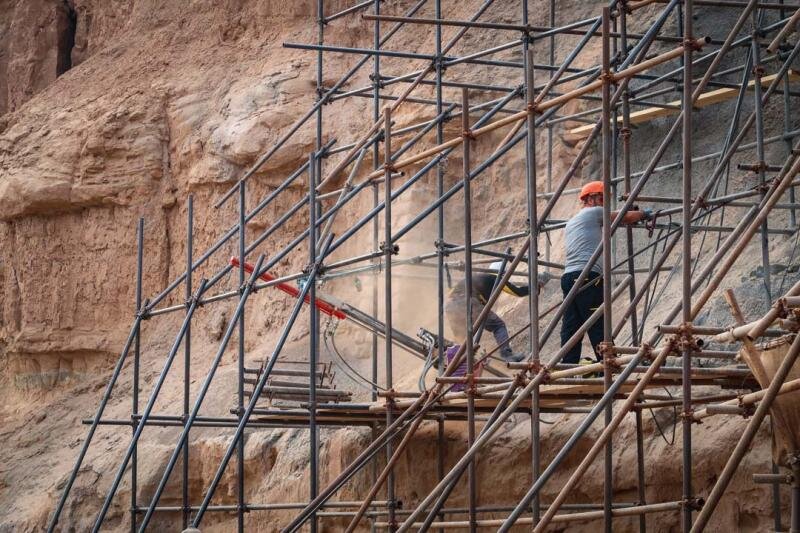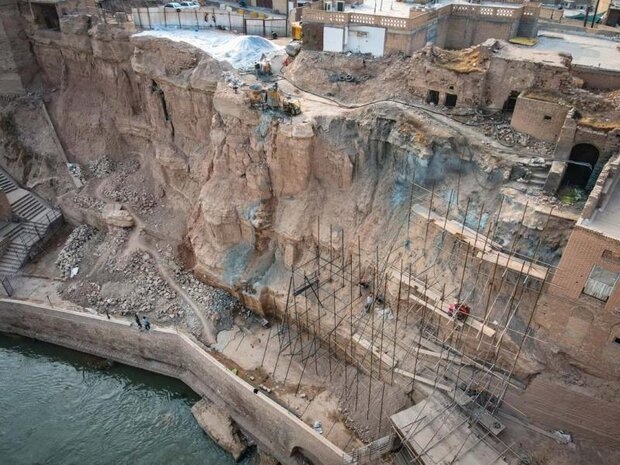Shushtar Historical Hydraulic System: project helps ease concerns over fate of UNESCO site

TEHRAN - Workers have commenced a restoration project to strengthen some fortifications of the Shushtar Historical Hydraulic System, helping alleviate concerns about the fate of the allegedly unstable situation of that wonder of the ancient world.
So far, western walls of the Shushtar Historical Hydraulic System have been reinforced to end concerns of cultural heritage devotees over the safety of the UNESCO World Heritage site, Khuzestan province’s tourism chief said on Sunday.
The project worth 470 billion tomans ($1.75 million) includes the installation of retaining rods, and the implementation of a mesh network to fully stabilize surrounding walls, the official said.
Last October, cultural heritage enthusiasts warned about the unstable situation of the Shushtar Historical Hydraulic System, saying some of its surrounding walls are “not in a good condition.”

“It requires a national determination as such a World Heritage site belongs to the entire humans, and we are responsible for this heritage to pass on to the next generation,” they said.
The site previously closed its doors amid safety concerns after its western side was announced to be “unstable.”
The ancient hydraulic system comprises bridges, weirs, tunnels, canals, and a series of ancient watermills powered by human-made waterfalls. It is named after an ancient city of the same name with its history dating back to the time of Darius, the Great, the Achaemenid king.

The property is as rich in its diversity of civil engineering structures and constructions as in the diversity of its uses (urban water supply, mills, irrigation, river transport, and defensive system). The Shushtar Historical Hydraulic System testifies to the heritage and the synthesis of earlier Elamite and Mesopotamian know-how; it was probably influenced by the Petra dam and tunnel and by Roman civil engineering.
“The hydraulic system has been considered a Wonder of the World not only by the Persians but also by the Arab-Muslims at the peak of their civilization,” according to the UN cultural body.
Furthermore, one of its main canals is a veritable artificial watercourse that made possible the construction of a new town and the irrigation of a vast plain, at the time semi-desert.
UNESCO says that the Shushtar Historical Hydraulic System demonstrates outstanding universal value as in its present form, it dates from the 3rd century CE, probably on older bases from the 5th century BC. It is complete, with numerous functions, and large-scale, making it exceptional.
AFM
